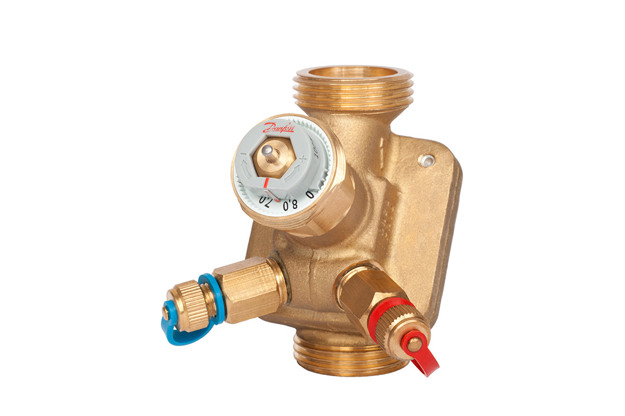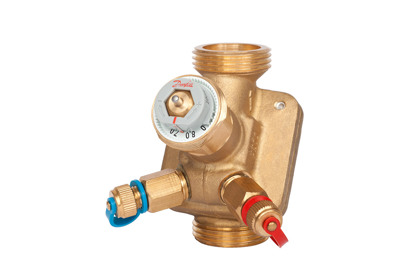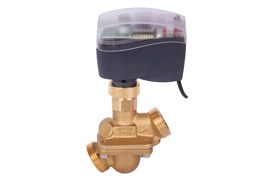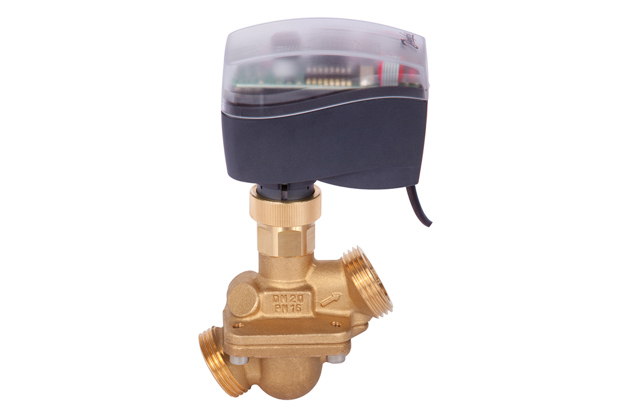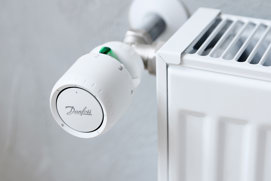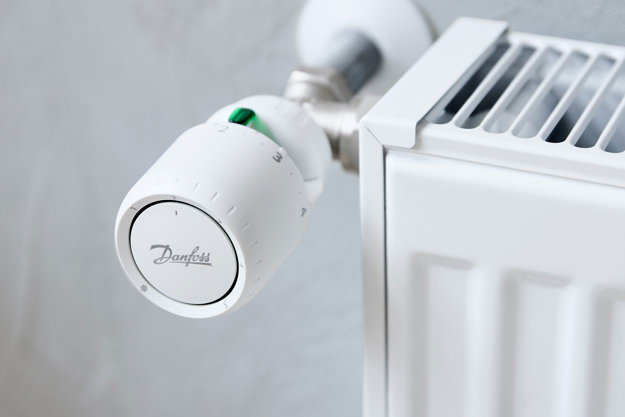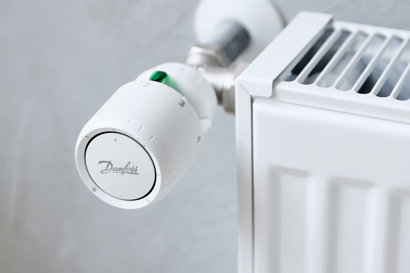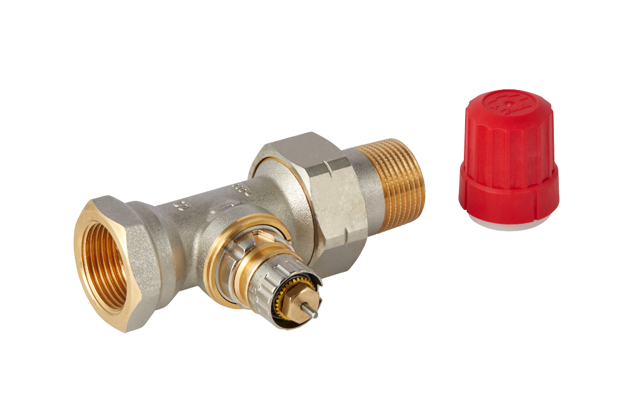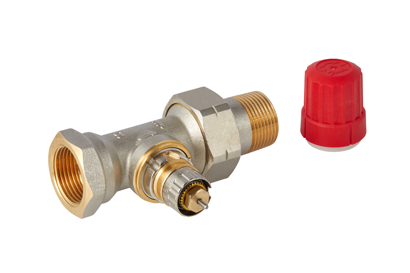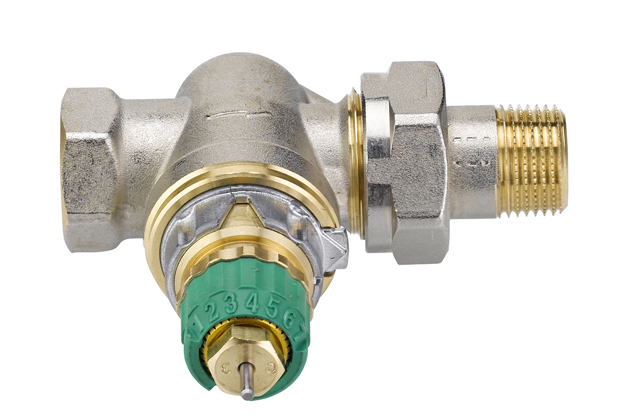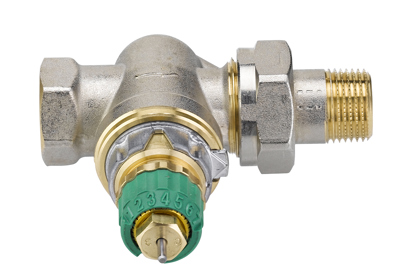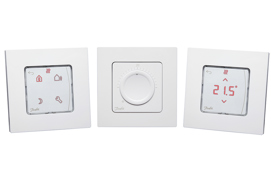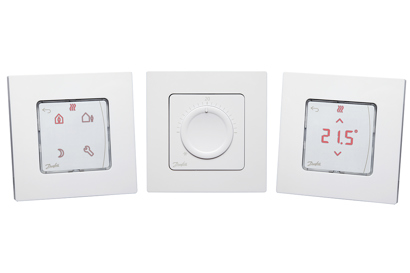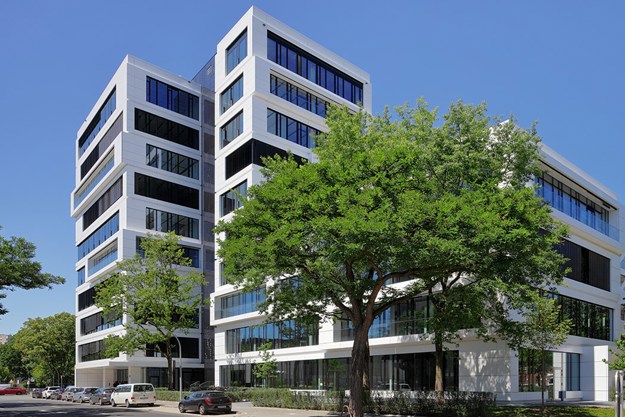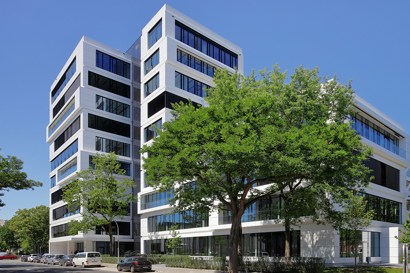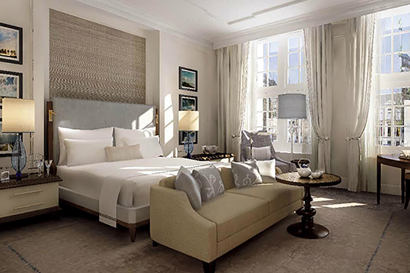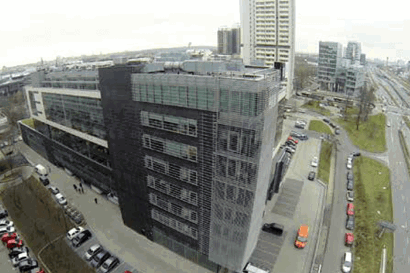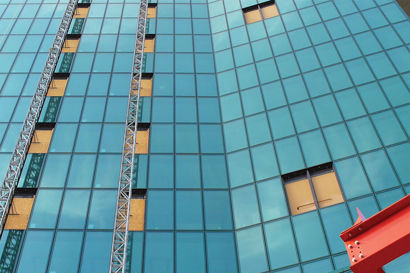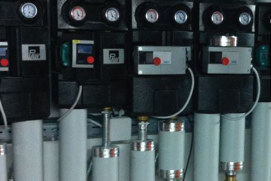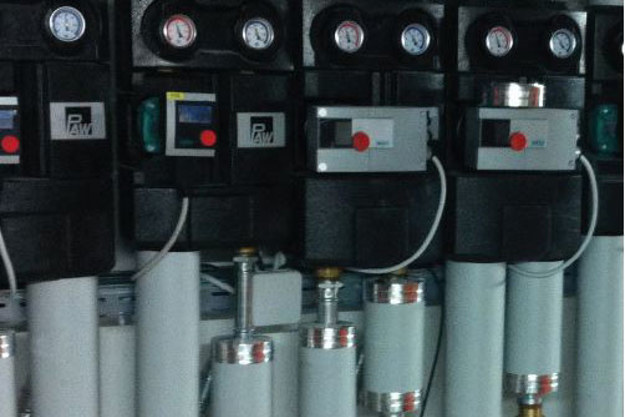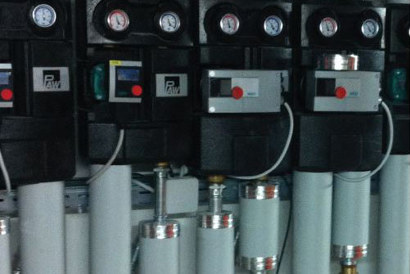To achieve the best possible indoor comfort for workers, guests, patients or other users, every building is equipped with a suitable Heating and/or comfort cooling system. There are various options to increase or decrease the room temperatures and how this is controlled:
- Terminal units
- Radiator heating
- Underfloor heating
Terminal units
Among others, cover fan coil units, cooling panels and climate ceilings. These are mostly installed in the ceiling and provide a room with heating and/or cooling via a 2-, 3- or 4-pipe system. To control the room temperature, the most accurate results, in both full- and partial load conditions, can be achieved by using Pressure-Independent balancing and Control Valves (PICV). They are simply set to the required flow under full load conditions and function as automatic flow limiters. In partial load conditions, the actuator accurately reduces the flow according to needs. No overflow situation will occur, increasing the energy efficiency of the heat or cooling source.
The actuators can be controlled via a Building Management System (BMS) or stand-alone electronic room controllers. In case the terminal units contain a fan, the room controller can also be used to change the fan speed.
Radiator heating
In most cases, designed as a 2-pipe system with one or more radiators in every room. To control the room temperature, Danfoss radiator thermostats are used. They consist of a thermostatic radiator valve, mostly with a pre-setting of the design flow, and a temperature sensor. A wide variety of sensors ensure accurate control of the room temperature. For example, if curtains prevent proper measurement of room temperature, a version with remote sensor or remote sensor and control provide a better solution.
For optimal space comfort, it is recommended to equip the radiator system with an automatic hydronic balancing solution. This eliminates pressure fluctuations, thereby ensuring that the radiator thermostats function optimally.
Underfloor heating
Offers a high level of comfort by heating rooms from the floor up. The heat is spread evenly and, because it is situated in the floor, it doesn't take up any precious room space. We offer both water-based (hydronic) underfloor heating as well as electric underfloor heating solutions. It can be used to heat all spaces in the building or to only heat dedicated spaces, such as hotel bathrooms, where the comfort requirements are highest.
With both hydronic underfloor heating and electric underfloor heating systems, the room and/or floor temperature can be controlled via room thermostats. These ensure a superb level of space comfort while avoiding rooms being heated when this is not needed.
Electric Heating by Danfoss is energy efficient and environmentally friendly. It's a flexible solution for new build and renovation that can be used for wet and dry installation. Quick responding heating systems are easy to control. They enable you great comfort and convenience whilst ensuring user friendly solutions with lasting effect and highest quality standards.
How we can help you
Accurate room temperature control
High user comfort experience
Complaint-free indoor comfort
Wide variety of systems and control solutions
Quick responding floor heating
Invisible heat source

Danfoss HVAC applications in commercial buildings
Danfoss helps you create better indoor environments with HVAC solutions based on application knowhow and a comprehensive portfolio of products for heating, ventilation and air conditioning in public and commercial buildings.
Related products
Terminal units control
-
if (isSmallPicture) {


 AB-QM Pressure Independent Control Valves (PICV) DN25 - DN250
AB-QM Pressure Independent Control Valves (PICV) DN25 - DN250AB-QM Pressure Independent balancing and Control Valves (PICV) provide both a control functionality and dynamic balancing solution for HVAC heating and cooling systems. PICVs are designed for various types of terminal units, Air Handling Units (AHU), chillers and provide high indoor comfort and energy efficiency in public and commercial buildings.
-
if (isSmallPicture) {


 Actuators for PIBCV
Actuators for PIBCVTo take advantage of the combined balancing and control features of Danfoss AB-QM it has to be equipped with actuators controlled by room thermostats or a Building Management System. Danfoss offers a broad range of actuators varying from Thermal on-off to Geared digital actuators with bus communication.
Radiator heating
-
if (isSmallPicture) {


 Radiator thermostats overview
Radiator thermostats overviewDanfoss radiator thermostats maintain constant desired room temperatures, individually room by room and help to reduce energy consumption. Mechanical thermostats or smartphone controlled thermostats - find them all here.
-
if (isSmallPicture) {


 Radiator valves
Radiator valvesRobustly built and designed to meet the rigors of the commercial and industrial sectors, a comprehensive range of Danfoss radiator valves is available for practically all systems and installation conditions.
-
if (isSmallPicture) {


 Danfoss Dynamic valve™
Danfoss Dynamic valve™Danfoss Dynamic valve™, the innovative 2-in-1 pressure independent radiator valve that ensures both optimal temperature control as well as creating automatic hydronic balance in two-pipe heating systems – all in a single valve.
Hydronic floor heating
-
if (isSmallPicture) {


 Room controls
Room controlsTo ensure hydronic (water based) underfloor heating or cooling systems achieve the expected high level of comfort and low energy consumption, good room temperature controls are essential. They control the room or floor temperature to avoid overheating. For optimal comfort each room has it's own room thermostat.
Case studies
-
if (isSmallPicture) {


 Outstanding HVAC flexibility after high-end office building renovation
Outstanding HVAC flexibility after high-end office building renovationBuilding: Office
Application: Hydronic balancing and remote control of 4-pipe heating/cooling change-over system
Challenge: Ensure a flexible to use HVAC system with DGNB sustainability certification
Solution: Digital NovoCon actuator combined with AB-QM control valves and NovoCon CO6 combined with ChangeOver6 as a combination balance the system hydronically, allow remote access via a BMS and control the room temperatures during both heating and cooling operation. -
if (isSmallPicture) {


 High-end climate solutions in Waldorf Astoria by Hilton, Amsterdam, the Netherlands
High-end climate solutions in Waldorf Astoria by Hilton, Amsterdam, the NetherlandsBuilding: Hotel
Application: Hydronic balancing and control for radiator heating and fan coil cooling
Challenge: Establish top level comfort and minimum energy consumption for heating and cooling
Solution: Fan-coil units for cooling; 8 heating risers and radiators equipped with Danfoss products. -
if (isSmallPicture) {


 HVAC control at Katowice business centre, Poland
HVAC control at Katowice business centre, PolandKatowice Business Centre is a modern office building where Danfoss hydronic balancing solutions are used; AB-QM balancing and control valves in combination with revolutionary NovoCon® actuators.
-
if (isSmallPicture) {


 Energy comfort in Prime Tower, Zurich, Switzerland
Energy comfort in Prime Tower, Zurich, SwitzerlandThe Prime Tower in Zurich is a building of many records. With its 126 meters it is the tallest building in Switzerland with 36 floors and 40,000 square meters accommodating mostly offices. And with its more than 6,000 AB-QM valves it is also one of the biggest heating and cooling installations ever designed and installed by Danfoss.
-
if (isSmallPicture) {


 Hydronic balancing in SAMBA bank head office, Riyadh, UAE
Hydronic balancing in SAMBA bank head office, Riyadh, UAEAt the heart of the new King Abdullah Financial District in Riyadh stands the impressive SAMBA head office. The 40-storey building represents a landmark in sustainable architecture and engineering and forms an attractive work space for the 800 people working in the SAMBA Financial Group head office.
-
if (isSmallPicture) {


 Hydronic balancing for cooling in Consplant tower, Kuala Lumpur, Malaysia
Hydronic balancing for cooling in Consplant tower, Kuala Lumpur, MalaysiaThe 20-storey Consplant Tower in Kuala Lumpur, Malaysia, is used very differently during the day and night. Office space is primarily used during the daytime, shopping malls into the early evenings and restaurants into the night. This mixed use of the building, however, challenges the energy efficiency of the cooling system.



